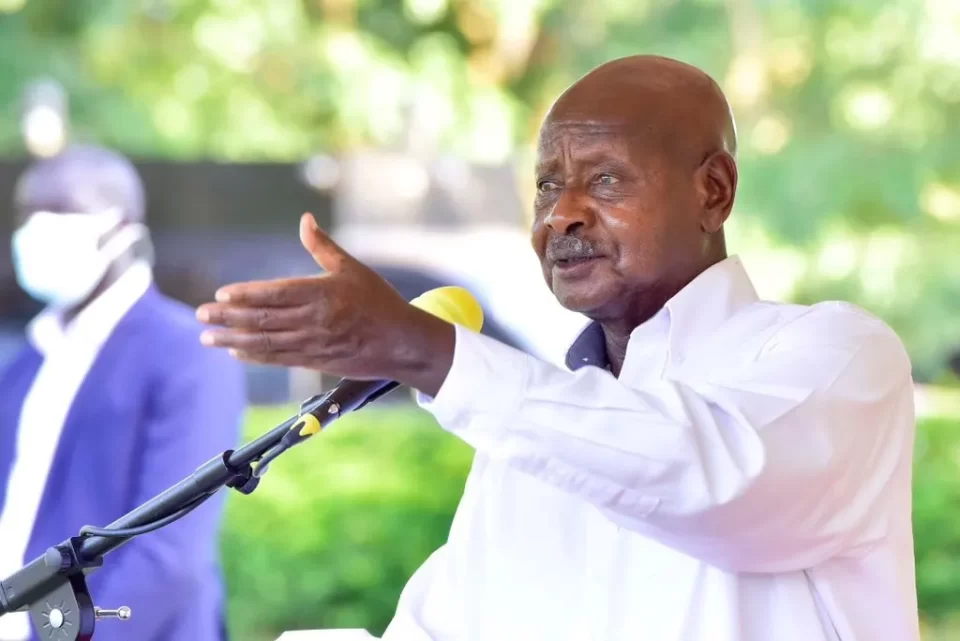By Our Reporter
In a decisive move that blends political foresight with socio-administrative reform, President Yoweri Museveni has approved the creation of three new districts and one city from the existing Greater Tororo District. The decision, announced Wednesday evening, comes at a pivotal moment for Uganda as the nation prepares for the 2026 general elections—placing strategic emphasis on decentralization, ethnic harmony, and improved service delivery.
The restructuring follows a high-level peace-building meeting held at State House Entebbe. Present were traditional and religious leaders, Members of Parliament, LC III chairpersons, ministers from the region, and district councillors—signaling a broad-based consensus to address long-standing grievances in the Bukedi Sub-region.
Under the new plan, Tororo Municipality will be elevated to city status, officially becoming Tororo City, while the rest of the district will be split into three new administrative districts:
- Mukuju District, formed from Tororo County North and Tororo County South.
- Mulanda District, encompassing West Budama County South and West Budama Central.
- A third district, to be carved from West Budama County North and West Budama North-East, with its name to be determined through stakeholder consultations—particularly with the Japadhola cultural leadership.
This move is widely seen as not only administrative but also deeply strategic. With elections on the horizon, Museveni’s government appears keen to stabilize politically sensitive areas, resolve ethnic friction, and entrench service delivery mechanisms that resonate with rural communities’ development needs.
Turning Ethnic Division Into Administrative Opportunity
The Tororo region has for decades been at the center of ethnic tensions, particularly between the Japadhola and Iteso communities. Control over the municipality has often been a flashpoint, with both groups lobbying for autonomy and representation. By creating administrative units that reflect both demographic realities and cultural sensitivities, the government is hoping to turn a history of division into a model of coexistence.
According to officials who participated in the State House meeting, the restructuring reflects recommendations from the recently released London Report, which clarified disputed boundaries between the former counties. The report played a critical role in mediating historical disagreements and shaping the redistricting process.
Tororo District’s population of over 639,000 has long outpaced the capacity of a single administrative unit. The decentralization move is expected to streamline public services, improve access to healthcare and education, and make budget allocations more targeted and effective.
In 2005, Butaleja District was carved out of Tororo, a precedent that reflected a broader pattern of administrative decentralization in Uganda over the past two decades.
City Status For Tororo
The elevation of Tororo Municipality to city status is perhaps the most symbolic part of the announcement. Not only does it acknowledge the area’s growing urban significance, but it also balances the administrative reshuffle with an upgrade that benefits both Japadhola and Iteso constituents.
Tororo City is poised to become a new urban anchor in the Bukedi Sub-region—positioned to attract investment, expand infrastructure, and serve as a hub for trade, especially given its proximity to the Kenya border.
Meanwhile, with 2026 fast approaching, stakeholder consultations, particularly regarding the naming and setup of the unnamed third district, are set to begin immediately. Government sources suggest that the new boundaries and governance structures will be integrated into Uganda’s electoral roadmap, ensuring that the upcoming elections reflect the new reality on the ground.
While implementation will come with challenges—including resource reallocation, infrastructure realignment, and leadership appointments—officials remain optimistic. Many believe that the restructuring is a long-overdue step toward aligning Uganda’s political geography with its social and cultural dynamics.
In Museveni’s Uganda, administrative boundaries have always carried political weight. With this move, the President is not just redrawing maps—he’s reshaping local identities, redistributing power, and laying the groundwork for what he hopes will be a more united and governable nation.
For Tororo, the changes mark the beginning of a new chapter—one where communities can lead themselves, differences are acknowledged rather than ignored, and governance reaches the last village. And for Uganda, it’s a reminder that sometimes, the path to peace and progress begins with a pen stroke and a bold vision.
Have An Advert Or Article You Want Us To Publish? Email: swiftnewsug@gmail.com


